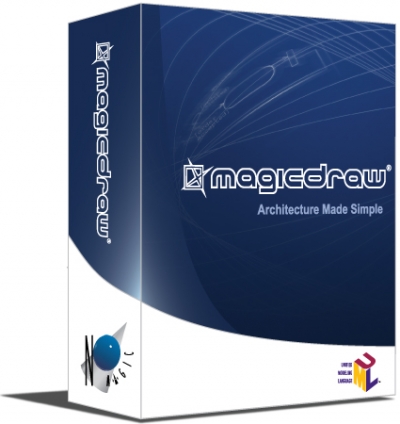-

MagicDraw
Description
MagicDraw is a general purpose UML 2 modeling tool (it also supports other modeling languages, but they are not the focus of the courses). It supports all UML 2 diagram types (and more), and provides advanced features such as code and report generation, collaboration facilities, model execution simulation, and OCL support.Usage
Students will use MagicDraw to create and share their models. Therefore, it is the central software component of the courses. Depending on the course scope, MagicDraw's more advanced features will also be introduced and used. -
Installation
For installation instructions, consult the official Installation and Use guidelines. The license key files provided by DTU will be accessible through CampusNet . Students have access to an academic enterprise license, which means that they are allowed to install MagicDraw on their private computers, but may exlusively use it for acedamic purposes. This includes other courses and thesis projects, but excludes any work done for commercial enterprises. when students leave DTU, they are no longer entitled to use this license. Any violation of this restriction is entirely within the responsibility of the student.
. Students have access to an academic enterprise license, which means that they are allowed to install MagicDraw on their private computers, but may exlusively use it for acedamic purposes. This includes other courses and thesis projects, but excludes any work done for commercial enterprises. when students leave DTU, they are no longer entitled to use this license. Any violation of this restriction is entirely within the responsibility of the student.
-
Download
MagicDraw UML 16.9
This version of MagicDraw is available for compatibility reasons only: in version 17.0.3, a major change to the internal representation occurred, that might confuse tools processing mdxml files. We will make it available on demand, only.MagicDraw UML 17.0.3
This version of MagicDraw is available to students with an enterprise license. MagicDraw is now available exclusively through DTU's central Software distribution channel. There are versions for Windows (32/64bit), OS X, and Unix/Linux. At the download site, there are executables for the client/stand-alone, and the TeamWork-Server, and the license files. Installation is straightforward. Comprehensive documentation is found on the MagicDraw website .
.
-
Tutorials, FAQ's
The following documents are provided to students as tutorials and FAQs aimed at effectively using MagicDraw for course-related assignments.



